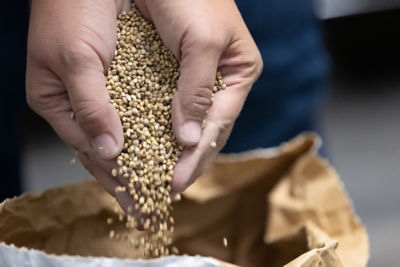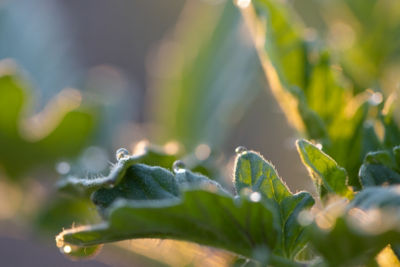Causal Agent
Burkholderia cepacia
(syn. Pseudomonas cepacia)
Distribution
Worldwide
Symptoms
Field symptoms often appear as one or two leaves that have turned a light brown color. A watery rot develops at the base of the leaves and proceeds into the neck, allowing the leaves to be easily pulled from the bulb. As the disease progresses the outer bulb scales are infected. However, the outer most bulb scales and inner bulb scales may not become infected, which distinguishes sour skin from slippery skin where inner bulb scales are infected first. Infected scales develop a slimy pale yellow to light brown decay and may separate from adjacent scales allowing the firm center scales to slide out when the bulb is squeezed. Infected bulbs often have an acrid, vinegar-like odor due to secondary invaders, especially yeasts, colonizing decaying bulbs.
 Cross-section through bulb showing the separation of scales.
Cross-section through bulb showing the separation of scales.
 Cross-section through bulb showing the separation of scales.
Cross-section through bulb showing the separation of scales.
Conditions for Development
Burkholderia cepacia is commonly spread by heavy rains, overhead irrigation and flooding which splash the bacteria onto young or wounded foliage. Infection typically occurs through wounds including those made when onions are cut at harvest. Infection can also occur when water lands on upright leaves and flows into leaf blade axils carrying the bacterium with it. Sour skin is favored by rainstorms and warm weather, and develops rapidly at temperatures above 30°C (86°F).
Control
The use of furrow irrigation, instead of overhead and recycled irrigation water, will reduce losses from this disease. Do not damage foliage prior to harvest or bulbs during harvest since B. cepacia enters the plant primarily through wounds. Onion crops should be harvested at maturity and the bulbs dried quickly. Storing onions at cool temperatures 0°C (32°F) with adequate ventilation to prevent condensation on the bulbs will reduce storage losses resulting from this disease.




